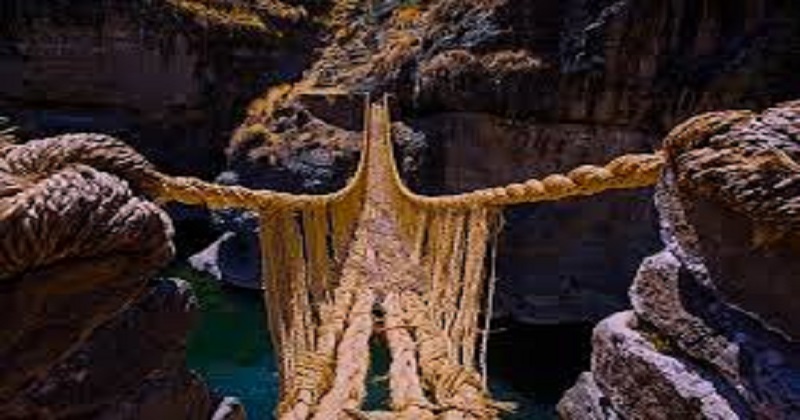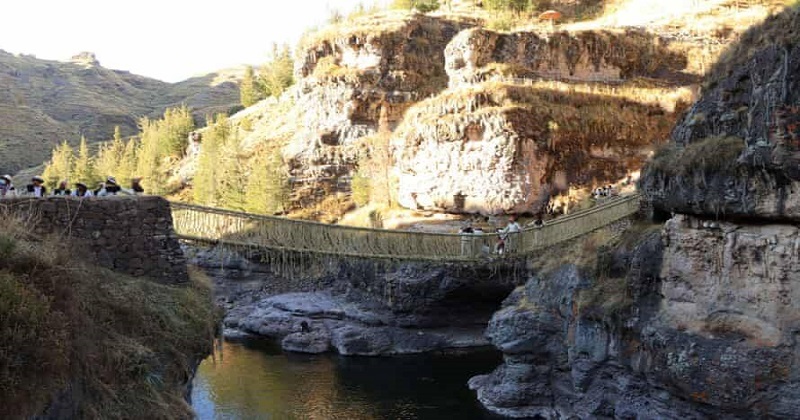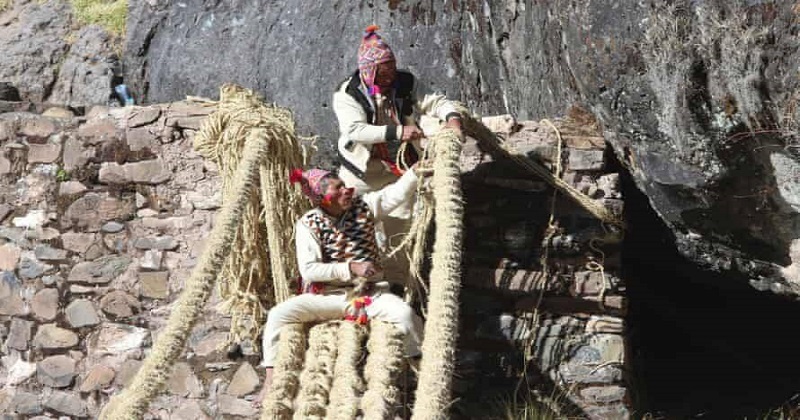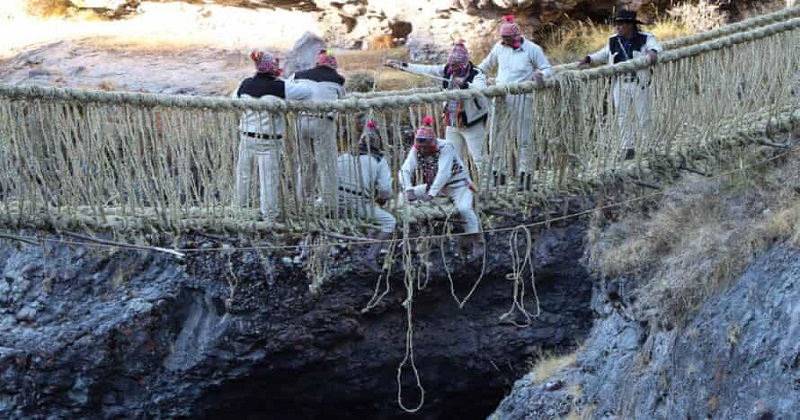
The Q’eswachaka Bridge located in the Cusco region in Peru is a traditional Inca rope hanging bridge over a gorge of the Apurimac River in the southern Andes. The bridge which has been rebuilt for over 500 years connects the four Quechua-speaking communities – Huinchiri, Chaupibanda, Choccayhua, and Ccollana.

The Q’eswachaka Bridge is the last hand-woven bridge in Peru. It is one of the many suspension bridges built during the Inca Empire. These bridges were part of the network that connected important places of the Inca Empire. As years went by many of the bridges were disused or destroyed. With the introduction of modern roads and bridges, the rest of the bridges also disappeared.
Over time handwoven bridges sag and so it has to be rebuilt every year. It is usually done during the spring season (June) using traditional Inca weaving techniques and raw materials. But due to the Covid pandemic, the bridge was not rebuilt last year and the old bridge collapsed in March.
Huinchiri community in Quehue district is rebuilding the 33-meter (108 ft) long hanging bridge using their traditional weaving techniques passed from generation to generation.
In 2013, UNESCO recognized the “Knowledge, Skills and rituals related to the annual renewal of the Q’eswachaka Bridge by listing it as the Intangible Cultural Heritage of Humanity.
According to UNESCO, the communities consider the bridge as a sacred expression of their bond with nature, tradition, and history. The reconstruction of the bridge is a communal effort and it is accompanied by rituals and ceremonies.
Read Also World’s longest pedestrian suspension bridge opens in Arouca Geopark, Portugal
A new bridge is usually built even when the old one is still there. Once the new bridge is ready, they cut off the old bridge and let it fall onto the river.
Making the bridge is a three-day process. It begins with the collection of grass locally known as goya ichu. After some procedures to make the grass flexible, it is first twisted into small thin ropes and the small ropes are used to make larger ropes. Then the larger ropes are braided together to form six bigger and heavier ropes. These six ropes are then tied tightly to ancient sturdy stone bases on both sides of the river. Four of the big ropes are used to make the floor of the bridge and two are used as handrails.


Experienced bridge builders start weaving the sides and the floor from both ends of the bridge to the middle. When the weavers from both ends meet the new bridge is complete. The communities celebrate the construction of the new bridge with music and feast.

Post Your Comments